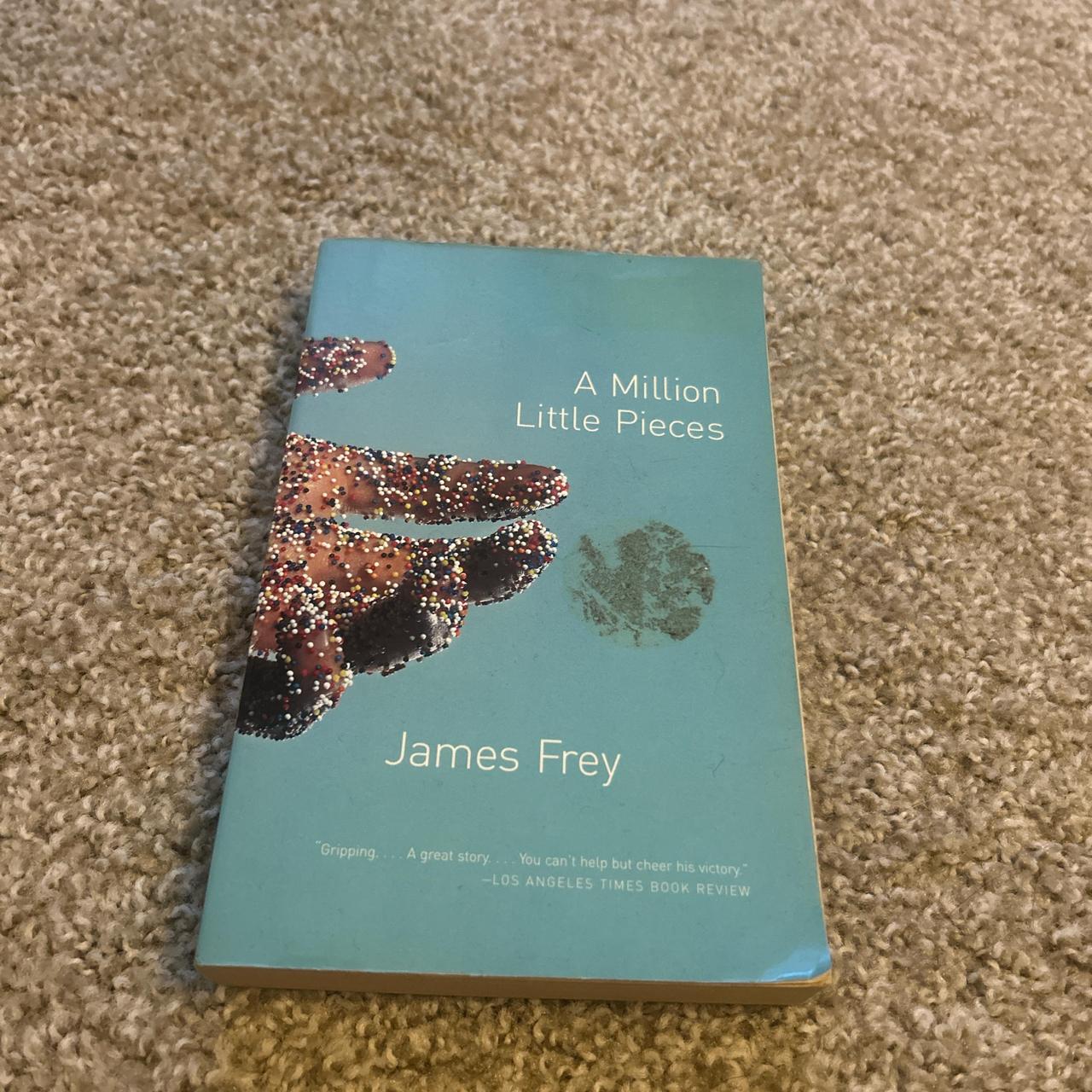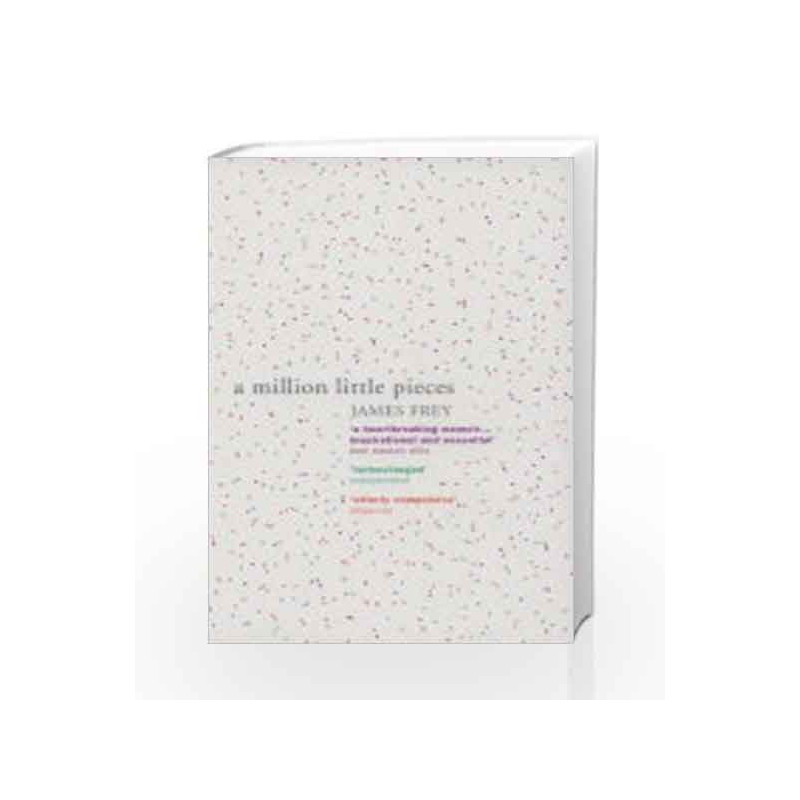A Million Little Pieces Book: An In-Depth Exploration

James Frey’s A Million Little Pieces, published in 2003, is a memoir that chronicles the author’s harrowing journey through drug addiction and subsequent rehabilitation. Its publication generated significant controversy, sparking debates about the nature of truth in memoir writing and the ethics of authorship. This article will explore A Million Little Pieces through various lenses, examining its genre, Frey’s writing style, its cultural impact, and its enduring relevance in discussions surrounding addiction and recovery.
The Genre and Literary Context of A Million Little Pieces

A Million Little Pieces occupies a complex and often contested space within the literary landscape. Initially marketed and received as a memoir, a genre typically associated with factual accounts of personal experiences, the book’s later revelation of significant fabrications sparked a fierce debate about the boundaries of truth in autobiographical writing. While Frey acknowledged embellishments and inaccuracies, the degree of his creative license remains a subject of ongoing discussion.

The book’s fragmented structure, characterized by short, declarative sentences and unconventional capitalization, contributes to its unique style. This stylistic choice mirrors the chaotic and disoriented state of mind experienced by Frey during his addiction and recovery, adding a layer of emotional rawness. However, this stylistic approach also attracted criticism, with some readers finding it distracting or self-conscious.
Despite the controversy surrounding its factual accuracy, A Million Little Pieces undeniably engages with themes central to the memoir tradition: self-discovery, confrontation with personal demons, and the arduous process of recovery. It probes the depths of addiction with a visceral intensity rarely seen in literature, making it a significant work, regardless of its categorization. Its influence can be seen in the subsequent wave of memoirs exploring addiction, inspiring both imitative and critically engaged works.
The Book’s Narrative Structure and Style
Frey’s writing style in A Million Little Pieces is unconventional and deliberately disjointed, reflecting the fragmented nature of his memories and the chaotic reality of his addiction. The book is largely composed of short, declarative sentences, lacking traditional punctuation and paragraph structure. This style, while enhancing the sense of immediacy and rawness, has been both praised and criticized. Proponents appreciate its ability to capture the intensity of Frey’s experiences, while detractors find it jarring or self-indulgent. The absence of quotation marks, for instance, blurs the lines between Frey’s internal monologue and dialogue, further mirroring the confusion and blurring of boundaries experienced by those struggling with addiction.

The use of repetition and fragmented narrative also contributes to the overall impact of the book. Certain phrases and images are repeated throughout, emphasizing key themes and reinforcing the cyclical nature of addiction and the struggle for self-control. The narrative jumps back and forth in time, reflecting the disjointed nature of Frey’s memories and creating a sense of unease and suspense.
James Frey: Author and Narrative Voice
James Frey’s background and personal experiences are intrinsically linked to A Million Little Pieces. A native of Cleveland, Ohio, Frey’s own struggles with addiction form the core of the book’s narrative. The authenticity of his experiences became a point of contention after the book’s success, leading to accusations of fabrication. The ensuing scandal challenged readers to re-evaluate the relationship between authorial intention and factual accuracy in memoir writing.
Frey’s subsequent works, such as My Friend Leonard and Bright Shiny Morning, further explored themes of addiction and recovery, though with a less controversial approach. His literary career, defined by both immense success and profound criticism, serves as a case study in the complexities of autobiographical truth and its reception by the public.
Frey’s Writing Style and Inspirations
Frey’s writing style in A Million Little Pieces is characterized by its raw, visceral intensity and unconventional structure. He eschews traditional punctuation and paragraphing, opting for a fragmented, stream-of-consciousness style that mirrors the fragmented state of his mind during his addiction and recovery. This stylistic choice was central to both the book’s success and its controversy. Many readers found it compelling, as it effectively conveyed the chaotic and disorienting effects of addiction; however, others found it disjointed and difficult to follow.
The influences on Frey’s writing are diverse. While he has not explicitly stated specific literary influences for A Million Little Pieces, the book’s unflinching portrayal of addiction echoes the work of writers like William S. Burroughs, whose raw and experimental style captured the bleak realities of addiction. The book’s thematic concern with redemption and spiritual awakening also suggests possible influences from confessional literature and spiritual writing.
Reading Habits, Educational Value, and Life Lessons from A Million Little Pieces
The intense and visceral nature of A Million Little Pieces creates a unique reading experience. Its unconventional structure and fragmented narrative can be initially challenging, requiring a different kind of engagement from the reader than more traditional narratives. However, this approach has the effect of drawing the reader into the author’s state of mind, creating a sense of intimacy and immediacy. The book’s impact is often described as both emotionally raw and deeply moving.
The book’s educational value lies in its unflinching portrayal of addiction, offering a stark and often uncomfortable look into the realities of substance abuse. Its graphic depiction of the physical and psychological effects of addiction serves as a powerful cautionary tale. Moreover, the book documents Frey’s journey through rehabilitation, offering insights into the treatment process and the challenges of recovery.
The life lessons embedded within A Million Little Pieces are complex and multifaceted. The book’s central message centers on the possibility of redemption and the power of self-determination, even in the face of overwhelming adversity. However, it also highlights the devastating consequences of unchecked addiction and the lasting impact it can have on individuals and their relationships. The controversy surrounding the book’s truthfulness adds another layer of complexity, challenging readers to consider the nature of truth and the ethical responsibilities of authors.
Summaries and Interpretations
A Million Little Pieces can be summarized as a harrowing account of James Frey’s journey through drug addiction and recovery. The book opens with Frey waking up disoriented and injured on a plane, with no memory of the preceding two weeks. This incident serves as a catalyst for his entering a rehabilitation center, where the bulk of the narrative unfolds. The narrative is fragmented and intensely personal, detailing Frey’s experiences within the rehab facility, his relationships with other patients, and his ongoing struggle with addiction. While seemingly straightforward in its initial portrayal, the book’s factual accuracy was later challenged, leading to a major controversy that sparked considerable debate about the ethics of memoir writing and the nature of truth in autobiographical narratives. Despite this controversy, the book remains a powerful exploration of addiction, the complexities of recovery, and the human capacity for redemption.
Different interpretations of A Million Little Pieces exist. Some readers focus on the visceral portrayal of addiction and the often brutal honesty of Frey’s account, seeing it as a powerful and important depiction of a difficult subject. Others, particularly after the revelation of inaccuracies, focus on the ethical considerations of the book’s construction and question its authenticity. Still others might interpret the book’s fragmented style and unconventional structure as reflective of the fragmented and chaotic state of mind experienced by someone struggling with addiction. Ultimately, the book invites multiple interpretations, reflecting its multifaceted nature and the subjective nature of the reader’s experience.
Cultural Impact and Legacy of A Million Little Pieces
The publication of A Million Little Pieces sparked a significant cultural event. Its initial success was followed by a scandal surrounding the book’s factual accuracy, leading to a widespread debate about the nature of truth in memoir and the ethical responsibilities of authors. The controversy profoundly impacted Frey’s career and reignited discussions about literary authenticity.
The book’s lasting impact can be seen in its influence on subsequent literature. It sparked a wider conversation about addiction and recovery, leading to a rise in memoirs exploring similar themes. The controversy surrounding its factual accuracy also led to a greater awareness of the ethical considerations involved in crafting autobiographical narratives.
A Million Little Pieces remains a significant work, despite its controversial aspects. Its exploration of addiction and recovery continues to resonate with readers, while its narrative structure and stylistic innovations have influenced other writers. The book’s complex legacy serves as a reminder of the challenges involved in representing personal experience truthfully and ethically within literary forms.
Literary Influence, Adaptations, and Awards
A Million Little Pieces had a significant literary influence, prompting a wave of similar memoirs dealing with addiction and personal struggle. Its success, despite the controversy, highlighted the public’s fascination with raw, visceral accounts of intense personal experiences. While the book itself didn’t receive major literary awards, its impact extended beyond the realm of formal accolades, driving conversations about memoir authenticity and the representation of addiction in literature.
The book’s popularity also led to several adaptations. A film adaptation was released in 2010, receiving mixed reviews. The film’s reception further illustrates the book’s complex and controversial legacy, highlighting its capacity to provoke intense reactions. The controversy over the factual basis of the memoir also affected the film adaptation, making it a topic of discussion beyond its artistic merits. This controversy continues to generate interest and debate within literary and cultural contexts.
Communities and Discussions Surrounding the Book
A Million Little Pieces fostered various online communities and discussions. These communities often center on individual experiences with addiction and recovery, using Frey’s work as a point of reference and comparison. Readers share personal experiences, offer support, and discuss the book’s portrayal of addiction and rehabilitation. In addition to forums specifically dedicated to the book, discussions can be found across various online platforms, including book review sites and social media channels. The book’s controversial nature contributes to these lively and sometimes heated discussions, as readers engage in debate over the authenticity of the narrative and the broader implications of the memoir genre.
Libraries, Archives, and Digital Accessibility
A Million Little Pieces is widely available in physical and digital libraries worldwide. It’s presence in library collections reflects its sustained cultural significance, despite the controversy it generated. The book’s accessibility in various formats (print, ebook, audiobook) ensures it remains readily available to a diverse readership. Its inclusion in academic and personal collections indicates its status as a notable work in contemporary literature, even with the significant ethical questions it raises.
Public Libraries, Digital Libraries, and Rare Collections
The book’s presence in public library systems reflects its impact and its inclusion in a wide range of public readings. Its accessibility in digital libraries further emphasizes its continued importance, allowing easy access for students and other interested parties. While it may not be found as frequently in rare book collections, its availability in mainstream library holdings underscores its status as a significant work of modern literature. The fact that A Million Little Pieces is readily available through different types of libraries speaks to its continuing relevance and appeal.
Conclusion
A Million Little Pieces remains a potent and complex work of literature, its legacy indelibly marked by both its considerable success and its subsequent controversy. This article has explored the book from multiple perspectives, considering its genre, its author’s stylistic choices, its impact on readers, its cultural reverberations, and its accessibility through various library systems. Regardless of one’s stance on the factual accuracy of its contents, the book’s exploration of addiction, recovery, and the complexities of self-representation in memoir form continues to stimulate important discussions and conversations. Its enduring presence in libraries worldwide stands as a testament to its impact, and its continued relevance within the literary landscape is undeniable.